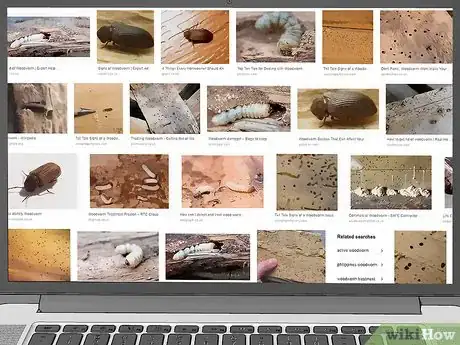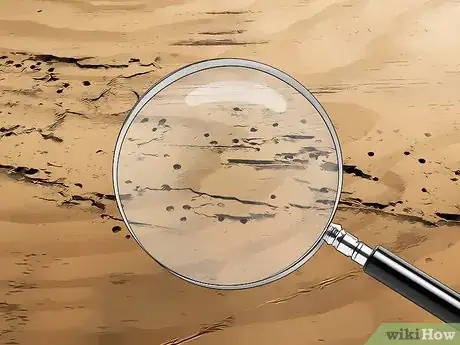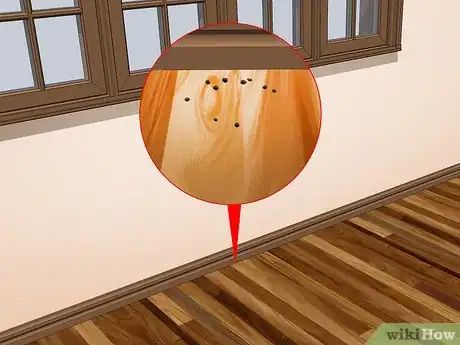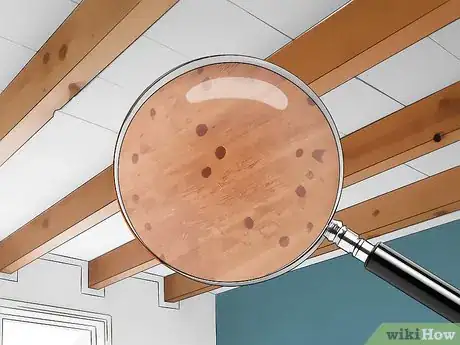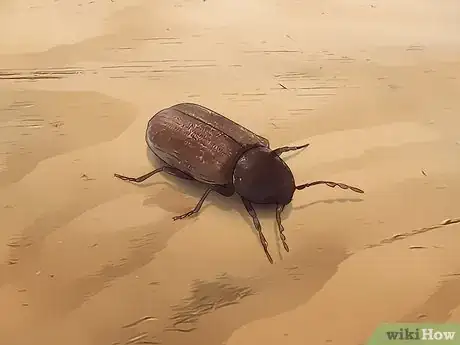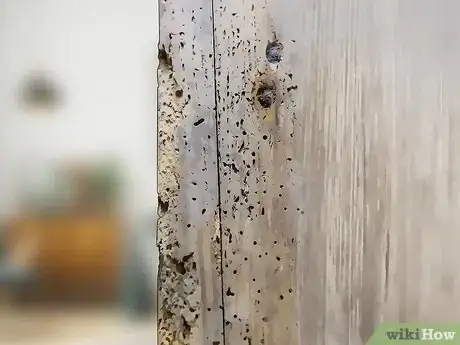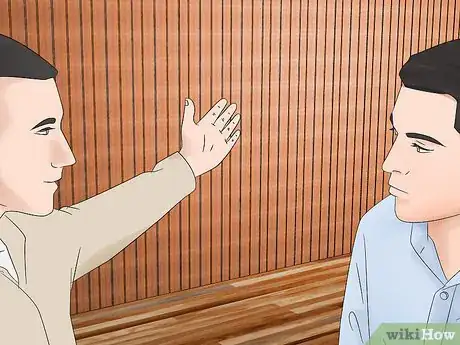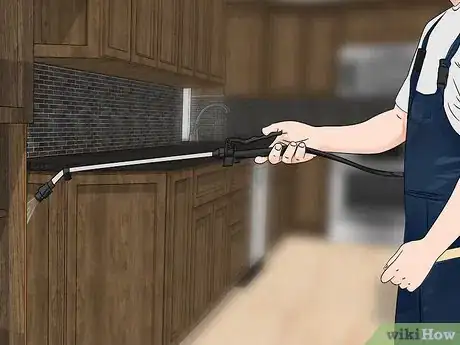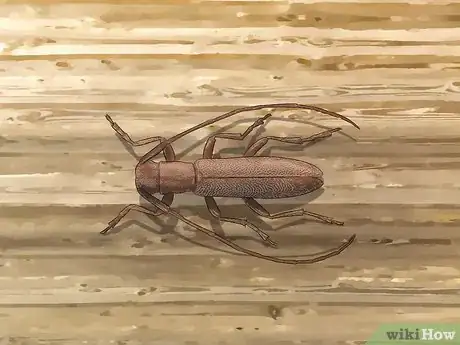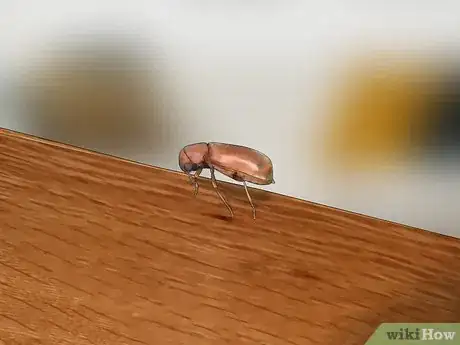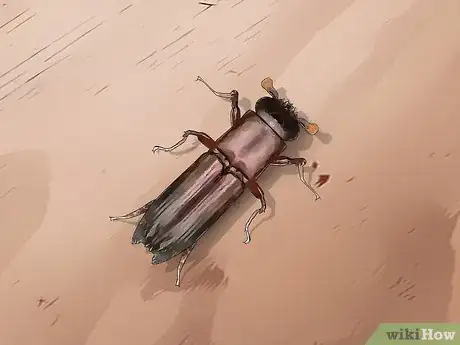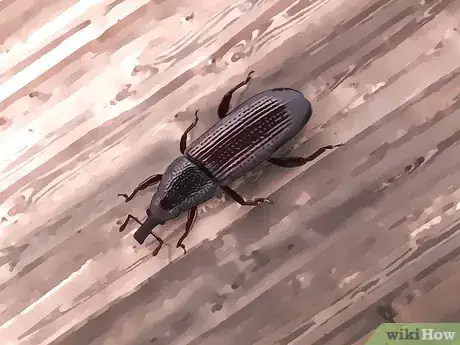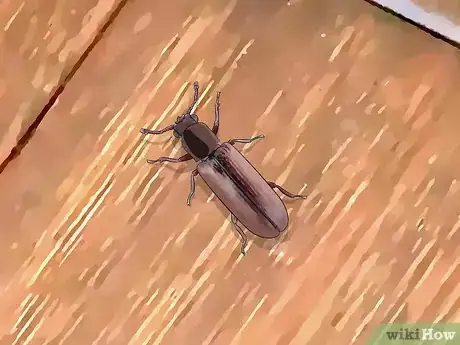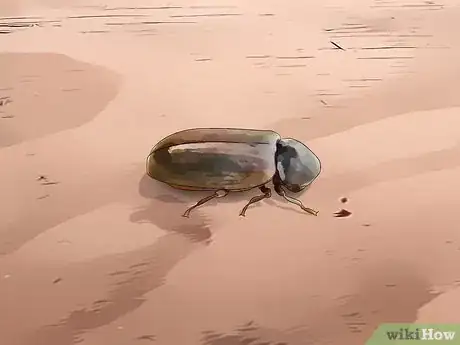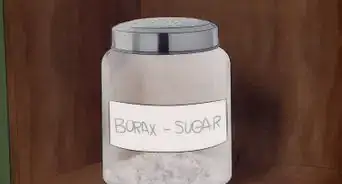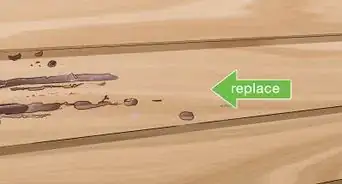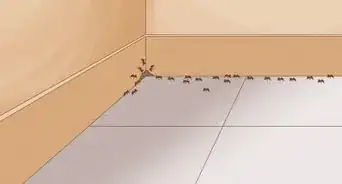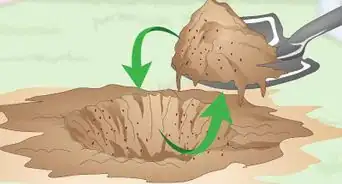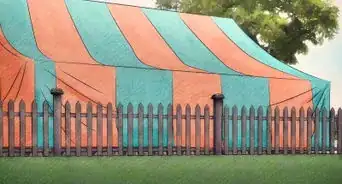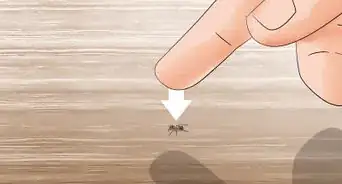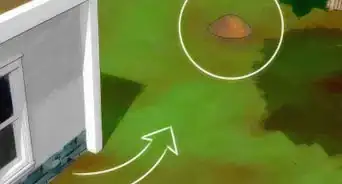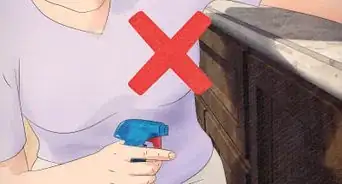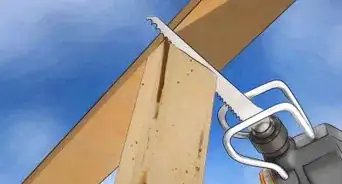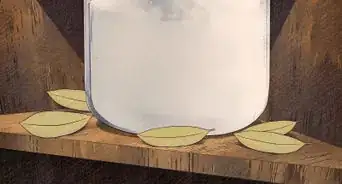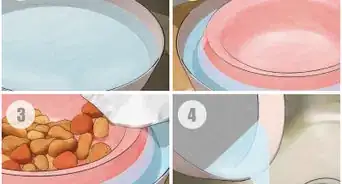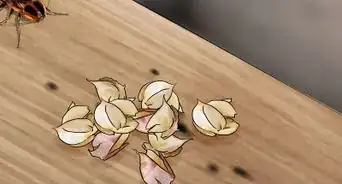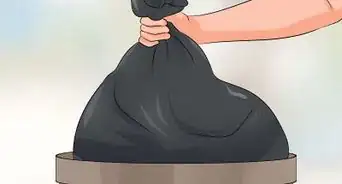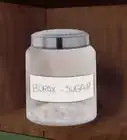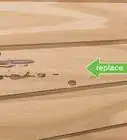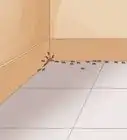This article was co-authored by Chris Parker and by wikiHow staff writer, Amy Bobinger. Chris Parker is the Founder of Parker Eco Pest Control, a sustainable pest control service in Seattle, Washington. With over seven years of experience, Chris specializes in Integrated Pest Management and doesn’t use any chemicals for pest removal. He offers removal services for ants, rodents, fleas, spiders, wasps, and more. Chris is a certified Commercial Pesticide Applicator in Washington State and received his bachelor’s from the University of Washington.
There are 10 references cited in this article, which can be found at the bottom of the page.
This article has been viewed 118,724 times.
“Woodworm” refers to the larvae stage of several species of beetles, including the Common Furniture Beetle and the Powder Post Beetle, which emerge from eggs that have been laid inside wood. To find woodworm, shine a flashlight across the edges of wood flooring, roof beams walls, and wooden furniture. In addition to boring holes and dust, look for brittle wood that crumbles easily. If you have difficulty identifying woodworm, call an exterminator. You can also try to identify woodworm that occurs outdoors, like Forest Longhorn Beetle woodworm and Ambrosia Beetle woodworm.[1]
Steps
Identifying Woodworm at Home
-
1Look up pictures of woodworm. If you decide to investigate your home for signs of woodworm, look up pictures of infected wood online to get a sense of what you're searching for; short of seeing adult beetles themselves, damage to wood is they best way to identify woodworm. The Common Furniture Beetle, which attacks the sapwood of hardwoods and softwoods, as well as plywood, is the most likely culprit. Evidence of Common Furniture Beetle woodworm includes exit holes in wood that are 1.5 to 2 mm (1/16 inch) in size, short tunnels than run along the grain of the wood, and lemon shaped pellets present in gritty bore dust.
- Note that damage to wood done by the Powder Post Beetle, normally found in hardwood storage areas, can be confused with Furniture Beetle damage; research both.[2]
-
2Look for bumps, holes, or undulations. Use a flashlight to examine wood, particularly in dark corners. Do not shine the light directly onto the surface of the wood; instead, lay it flat against the surface so the light shines over, revealing any bumps, holes, or undulations. These marks can often be missed by the naked eye.[3]Advertisement
-
3Examine wood floors. Small holes caused by woodworm are typically found below the floor's surface. Start your search around the floor's edges and under windows, where adult beetles tend to fly towards light. Regardless of where an infestation has started, evidence will eventually emerge in these places.[4]
- Note that while woodworm thrives in damp areas, it is capable of surviving in dryer conditions as well.
-
4Check the roof, walls, and furniture. Woodworm is often found in ceiling beams in household attics, which can cause serious structural problems over time. Look for woodworm damage to the ceiling joists as well as trimmers around the access hatch. Thoroughly inspect all roof beams that you can access safely, using a step stool or ladder, as well as walls (in particular, near the edges) and wooden furniture.[5]
-
5Look for beetles. Spotting the Common Furniture Beetle is a good indication that woodworm is present in wood in the surrounding area. Look for insects that are small, dark, and reddish in color, approximately 3mm to 5mm in length. Beetles will typically be spotted between March and September, during flight season when they emerge to mate.[6]
-
6Identify advanced damage. Advanced damage caused by woodworm is evident when wood starts crumbling around its corners or edges. Weak and damaged floorboards are also indicative of a serious woodworm infestation that warrants the assistance of an exterminator. Extensive wood damage will compromise the strength of wood and, accordingly, the structural integrity of a home.[7]
Seeking Expert Help
-
1Find an exterminator. If you are having difficulty identifying active woodworm in your home (as opposed to other damage to the wood, or damage from woodworm that is not longer active) look online for exterminators in your area. Read reviews online and ask friends or colleagues if they have recommendations for local extermination companies. Call different companies for quotes and assessments before booking an appointment.
-
2Have an assessment done. Identifying specific species' of woodworm is incredibly difficult, and can result in misguided treatment attempts that fall through. Ask an exterminator for a professional assessment of your problem. Inquire about pricing and potential treatments before agreeing to any services by the company.[8]
- Treatments could range from water based treatments for less severe infestations to fogging – a treatment for floors that generally does not require furniture and carpets to be removed.
-
3Get your infestation treated. Once an exterminator has identified woodworm in your home, consider having them treat the problem right away. Over time, woodworm can cause significant damage to wood as well as serious structural problems in a building. DIY measures can be ineffective and time-wasting if infested wood has been left untreated for too long, so be proactive about stopping the problem before it gets out of hand.[9]
Identifying Woodworm Outside the Home
-
1Look for the Forest Longhorn Beetle woodworm. The Forest Longhorn Beetle and its larvae are only found on trees in the forest. Look for large bore holes that can be up to 10 mm (3/8 inch) across, much larger than most household woodworms. Note that tunnels will be very discreet and run against the grain of the wood.[10]
-
2Search for Waney Edge Borer woodworm. Waney Edge Borer woodworm can be found in wood that has bark on it, and is rarely found in homes. Look for borer dust with bun-shaped pellets around the bark areas from the boring holes. The holes are usually around 2 mm (1/16 inches) in diameter.[11]EXPERT TIP
"The pile of dust found outside of woodworms' boring holes is called frass."
Chris Parker is the Founder of Parker Eco Pest Control, a sustainable pest control service in Seattle, Washington. With over seven years of experience, Chris specializes in Integrated Pest Management and doesn’t use any chemicals for pest removal. He offers removal services for ants, rodents, fleas, spiders, wasps, and more. Chris is a certified Commercial Pesticide Applicator in Washington State and received his bachelor’s from the University of Washington.
Chris Parker
Founder, Parker Eco Pest Control Chris Parker
Chris Parker
Founder, Parker Eco Pest Control -
3Spot Ambrosia Beetle woodworm. Ambrosia Beetle woodworm is generally found in the forest; this woodworm can’t survive in treated lumber, and only lives outdoors. Unlike other woodworm species, the adult does the tunneling, going against the grain and deep into the wood. Look for black-colored tunnels that are evident after trees are damaged or wood is cut (in a lumber yard, for example.)[12]
-
4Look for Wood Boring Weevil woodworms. Wood Boring Weevil woodworm can be found in wood damaged by fungal decay. You can identify this woodworm by looking for tiny holes with ragged bore holes and coarse dust. Look for tunnels that run against the grain and often break the surface of the damaged wood.[13]
-
5Detect Powder Post Beetle woodworm. Powder post woodworm is generally found in seasoned hardwood, which is usually only found in furniture factories and lumber yards. These woodworms tunnel along the grain of the wood, and don’t attack old wood (wood that is more than 15 years old). Look for tiny entry and exit bore holes no larger than 2 mm (1/16 inch), and loose, flour-like dust.[14]
-
6Look for Deathwatch Beetle woodworm. Deathwatch Beetle woodworm can be found in hardwood, (usually oak), that is partially decayed. Look for bore holes that measure up to 3 mm (1/8 inch) across, and boring dust containing large bun-shaped pellets that are visible without any magnification. If possible, inspect the interior of the wood; more extensive damage occurs inside the wood than what is visible externally.[15]
Expert Q&A
-
QuestionHow do you prevent woodworm?
 Chris ParkerChris Parker is the Founder of Parker Eco Pest Control, a sustainable pest control service in Seattle, Washington. With over seven years of experience, Chris specializes in Integrated Pest Management and doesn’t use any chemicals for pest removal. He offers removal services for ants, rodents, fleas, spiders, wasps, and more. Chris is a certified Commercial Pesticide Applicator in Washington State and received his bachelor’s from the University of Washington.
Chris ParkerChris Parker is the Founder of Parker Eco Pest Control, a sustainable pest control service in Seattle, Washington. With over seven years of experience, Chris specializes in Integrated Pest Management and doesn’t use any chemicals for pest removal. He offers removal services for ants, rodents, fleas, spiders, wasps, and more. Chris is a certified Commercial Pesticide Applicator in Washington State and received his bachelor’s from the University of Washington.
Founder, Parker Eco Pest Control Try installing a sump pump in your basement or adding a vapor barrier to your crawlspace to eliminate excess moisture and discourage woodworms.
Try installing a sump pump in your basement or adding a vapor barrier to your crawlspace to eliminate excess moisture and discourage woodworms. -
QuestionHow do I get rid of woodworm?
 Chris ParkerChris Parker is the Founder of Parker Eco Pest Control, a sustainable pest control service in Seattle, Washington. With over seven years of experience, Chris specializes in Integrated Pest Management and doesn’t use any chemicals for pest removal. He offers removal services for ants, rodents, fleas, spiders, wasps, and more. Chris is a certified Commercial Pesticide Applicator in Washington State and received his bachelor’s from the University of Washington.
Chris ParkerChris Parker is the Founder of Parker Eco Pest Control, a sustainable pest control service in Seattle, Washington. With over seven years of experience, Chris specializes in Integrated Pest Management and doesn’t use any chemicals for pest removal. He offers removal services for ants, rodents, fleas, spiders, wasps, and more. Chris is a certified Commercial Pesticide Applicator in Washington State and received his bachelor’s from the University of Washington.
Founder, Parker Eco Pest Control Call an exterminator or use an appropriate pest control product. Be sure to ask your exterminator about the different treatments they'll use. A liquid spray can be applied to unfinished wood—like the beams in your attic—since it will be absorbed, but it won't be as effective on finished wood like furniture and flooring. To treat those areas, you may need to either fog or fumigate your home. Fogging involves releasing a concentrated cloud of insecticide to a specific area, whereas fumigation involves enclosing your whole home.
Call an exterminator or use an appropriate pest control product. Be sure to ask your exterminator about the different treatments they'll use. A liquid spray can be applied to unfinished wood—like the beams in your attic—since it will be absorbed, but it won't be as effective on finished wood like furniture and flooring. To treat those areas, you may need to either fog or fumigate your home. Fogging involves releasing a concentrated cloud of insecticide to a specific area, whereas fumigation involves enclosing your whole home. -
QuestionWhat are the very small black flies that appear in my bathroom?
 JadexheCommunity AnswerFrom your description, they are probably gnats; however, seeing as they appear in your bathroom, they could be drain flies.
JadexheCommunity AnswerFrom your description, they are probably gnats; however, seeing as they appear in your bathroom, they could be drain flies.
References
- ↑ https://www.wisepropertycare.com/services/woodworm/what-is-woodworm/
- ↑ http://www.safeguardeurope.com/applications/woodworm
- ↑ http://www.preservationexpert.co.uk/common-furniture-beetle-woodworm-infestation-quick-guide-for-consumers-and-surveyors-too/
- ↑ http://www.preservationexpert.co.uk/common-furniture-beetle-woodworm-infestation-quick-guide-for-consumers-and-surveyors-too/
- ↑ http://www.onguardpestcontrol.ie/woodworm-treatment/
- ↑ https://www.timberwise.co.uk/woodworm-treatment/what-do-woodworm-look-like/
- ↑ https://www.rentokil.co.uk/woodworm/signs-of-woodworm/
- ↑ http://www.orkin.com/other/beetles/furniture-beetle/
- ↑ http://www.orkin.com/other/beetles/furniture-beetle/
- ↑ http://www.safeguardeurope.com/applications/woodworm
- ↑ http://www.safeguardeurope.com/applications/woodworm
- ↑ http://www.safeguardeurope.com/applications/woodworm
- ↑ http://www.safeguardeurope.com/applications/woodworm
- ↑ http://www.safeguardeurope.com/applications/woodworm
- ↑ http://www.safeguardeurope.com/applications/woodworm
